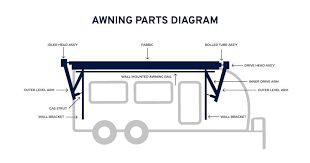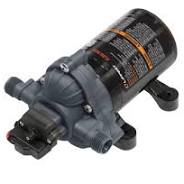The Class 3 RV: A Comprehensive Guide
When it comes to recreational vehicles (RVs), there are several classes to choose from based on size, amenities, and features. One popular option that offers a balance between maneuverability and living space is the Class 3 RV. In this guide, we’ll explore what makes a Class 3 RV unique and why it might be the perfect choice for your next adventure.
What is a Class 3 RV?
A Class 3 RV, also known as a mid-size motorhome, falls in between the smaller Class B campervans and the larger Class A motorhomes in terms of size and features. These RVs are typically built on a van chassis and offer more living space than their compact counterparts while still being easier to drive and park than the massive Class A models.
Features of a Class 3 RV
Class 3 RVs come in various floor plans and configurations to suit different needs. Some common features you can expect to find in a Class 3 RV include:
- Sleeping accommodations for up to six people
- Full kitchen with appliances
- Bathroom with shower
- Dining area that converts into additional sleeping space
- Storage cabinets and closets
- Entertainment systems
- Slide-out sections for extra living space when parked
Benefits of Choosing a Class 3 RV
There are several reasons why opting for a Class 3 RV might be the right decision for your travel needs:
- Maneuverability: Class 3 RVs are easier to drive and navigate through tight spaces compared to larger motorhomes.
- Living Space: Despite being smaller than Class A models, Class 3 RVs still offer ample living space for comfortable travel.
- Fuel Efficiency: Their compact size often results in better fuel efficiency compared to larger motorhomes.
- Versatility: Whether you’re planning a weekend getaway or an extended road trip, a Class 3 RV can accommodate your needs without feeling cramped.
In Conclusion
If you’re looking for an RV that strikes a balance between comfort, convenience, and maneuverability, consider exploring the options available in the Class 3 category. With their versatile layouts and practical features, these mid-size motorhomes provide an excellent platform for unforgettable adventures on the open road.
Understanding Class 3 RVs: Answers to Your Top 8 Questions
- Is my RV a class A or C?
- What is RV Type Class A?
- What is C Class A RV?
- What class is a 31 ft motorhome?
- Can I drive a class C RV with a regular driver’s license?
- What is a Class B and C RV?
- Is there a 4 season class C RV?
- What is the RV rule of 3?
Is my RV a class A or C?
One common question that arises among RV owners is determining whether their vehicle falls under the classification of a Class A or Class C RV. The key distinction between the two lies in their size and construction. Class A RVs are typically larger, bus-like motorhomes built on a commercial truck or bus chassis, offering spacious interiors and luxurious amenities. On the other hand, Class C RVs are more compact and are built on a van or truck chassis with an attached cab-over section, providing additional sleeping space. By understanding these differences in size and design, owners can easily identify whether their RV belongs to the Class A or Class C category.
What is RV Type Class A?
Class A RVs are the largest and most luxurious type of recreational vehicles available. These motorhomes are built on a specially designed chassis, often resembling a bus in appearance. Class A RVs offer spacious living quarters with amenities such as full kitchens, bathrooms, bedrooms, and entertainment systems. They are ideal for long-term travel or full-time living on the road, providing a comfortable and upscale experience for adventurers seeking luxury and convenience during their journeys.
What is C Class A RV?
The term “C Class A RV” can sometimes cause confusion due to the combination of two different classifications within the RV industry. In reality, there is no such thing as a “C Class A RV.” Class A RVs are typically the largest and most luxurious motorhomes, known for their spacious interiors and high-end amenities. On the other hand, “C Class” refers to a different category of RVs, often smaller and built on a van chassis. It’s important for potential buyers to understand the distinctions between these classes to make an informed decision when selecting the right RV for their needs and preferences.
What class is a 31 ft motorhome?
A 31 ft motorhome typically falls into the Class C category of RVs. Class C motorhomes, also known as mid-size motorhomes, are built on a van chassis and offer a balance between size and amenities. These RVs are popular for their manageable size while still providing ample living space for travelers. A 31 ft motorhome in the Class C category is often equipped with sleeping accommodations, a kitchen, bathroom, dining area, storage space, and entertainment systems, making it a versatile option for various travel needs.
Can I drive a class C RV with a regular driver’s license?
One of the frequently asked questions regarding Class 3 RVs is whether a regular driver’s license allows you to drive a Class C RV. In most states, a standard driver’s license is sufficient to operate a Class C RV, as long as the vehicle does not exceed a certain weight limit. However, it is essential to check the specific regulations in your state or country, as requirements may vary. Some states may require additional endorsements or restrictions for driving larger vehicles like Class C RVs, so it’s crucial to familiarize yourself with the local laws before hitting the road with your motorhome.
What is a Class B and C RV?
A common question among RV enthusiasts is the distinction between Class B and Class C RVs. Class B RVs, also known as campervans, are compact and built on a van chassis, offering basic amenities in a smaller space. On the other hand, Class C RVs are larger and typically feature a cab-over section that extends over the driver’s compartment. Class C motorhomes provide more living space and amenities compared to Class B models, making them a popular choice for families or travelers seeking additional comfort on their adventures. Understanding the differences between these two classes can help individuals choose the RV that best suits their travel needs and preferences.
Is there a 4 season class C RV?
The question of whether there is a 4-season Class C RV is a common inquiry among those considering RV options for year-round travel. While Class C RVs are known for their versatility and comfort, not all models are specifically designed for extreme weather conditions. However, some manufacturers offer 4-season packages or upgrades that include features such as enhanced insulation, heated tanks, and dual-pane windows to better withstand colder temperatures and harsher climates. It’s essential for prospective buyers to research and inquire about specific models that are equipped to handle all four seasons comfortably to ensure a seamless travel experience regardless of the weather conditions.
What is the RV rule of 3?
The RV rule of 3 refers to a popular guideline among Class 3 RV enthusiasts that emphasizes three key aspects: size, amenities, and maneuverability. This rule suggests that when choosing a Class 3 RV, it’s essential to consider the balance between the vehicle’s size for comfortable living space, the amenities it offers for convenience on the road, and its maneuverability for ease of driving and parking. By prioritizing these three factors, RVers can ensure they select a motorhome that meets their needs while providing a enjoyable travel experience.




